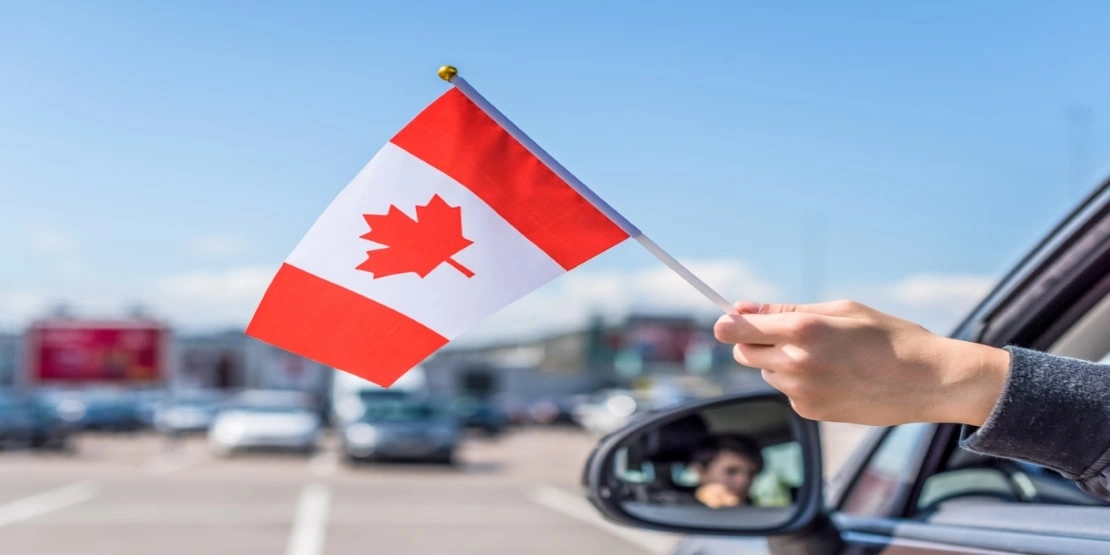Have you ever asked: What documents do I need to drive into Canada? If you have, then you must have known that entering Canada requires careful preparation to ensure a smooth and hassle-free experience at the border.
Understanding the necessary travel documents, vehicle requirements, and regulations can make all the difference, saving you time and avoiding potential complications with Canada Border Services Agency (CBSA) officers.
However, crossing the border into Canada by car is an exciting adventure, whether you’re planning a scenic road trip through British Columbia, a business trip to Toronto, or a visit to family in Quebec.
The key to a successful border crossing lies in having the right documentation for yourself, your passengers, and your vehicle. From passports to vehicle registration and insurance, each element plays a critical role in meeting Canada’s entry protocols.
We have outlined the essential documents, provides detailed pathways for preparation, and includes a comprehensive table to clarify requirements, ensuring you’re fully equipped for your journey into Canada.
What Documents Do I Need to Drive into Canada
Below are documents you must have to drive into Canada:
Valid Passport Requirements
A valid passport is mandatory for all travelers entering Canada by car, including U.S. citizens, who must present a U.S. passport book, passport card, or another Western Hemisphere Travel Initiative (WHTI)-compliant document.
Ensure your passport is valid for at least six months beyond your planned departure date from Canada to avoid entry issues. For non-U.S. citizens, a passport from your home country is required, and depending on your nationality, you may also need a visa or an Electronic Travel Authorization (eTA).
Pathway: Check your passport’s expiration date well in advance. If it’s nearing expiration, apply for renewal at least 6–8 weeks before your trip.
For non-residents, verify if your country requires an eTA or visa by visiting the Government of Canada’s immigration website. Apply for an eTA online ($7 CAD, processed within 72 hours) or a visitor visa through a Canadian consulate, which may take several weeks.
Vehicle Registration Proof
Your vehicle’s registration document is essential to prove ownership and compliance with Canadian regulations. The CBSA may request the original registration certificate or a certified copy issued by your state or country’s motor vehicle authority.
If you’re driving a rented or leased vehicle, carry the rental agreement or lease contract, along with a letter of authorization from the vehicle’s owner.
Pathway: Ensure your registration is current and matches the vehicle you’re driving. For rentals, contact your rental agency at least 48 hours before departure to obtain a cross-border authorization letter. Store these documents in an easily accessible location, such as your glove compartment, for quick presentation at the border.
READ ALSO:
- Can I Get My License in Canada as a Foreigner?
- Easiest Way to Get an International Driver’s License in Canada
- How to Get an International Driver’s License in Canada?
- What are Canadian Driving Rules?
- What is the Maximum Driving Hours in Canada?
Auto Insurance Verification
Proof of valid auto insurance is critical for driving in Canada, as the country requires liability coverage that meets its minimum standards (e.g., $200,000 in Ontario).
U.S. insurance policies are generally accepted, but you must carry a Canadian Non-Resident Insurance Card or a policy document explicitly stating coverage in Canada.
Pathway: Contact your insurance provider 1–2 weeks before your trip to confirm coverage in Canada. Request a Canadian Non-Resident Insurance Card, which is typically free and mailed to you within days. Alternatively, obtain a digital or printed policy document specifying Canadian coverage. Keep this with your registration for easy access.
Additional Travel Documents
Depending on your circumstances, additional documents may be required. If traveling with children under 16, a consent letter from a non-traveling parent or guardian is recommended to avoid delays.
For pet owners, a rabies vaccination certificate is mandatory for dogs and cats. If your trip involves goods or items exceeding personal exemptions, prepare receipts or a list to declare at the border.
Pathway: For children, draft a consent letter including the child’s name, travel dates, and parent’s contact information, and have it notarized for authenticity. For pets, visit your veterinarian 1–2 weeks prior to obtain an updated rabies certificate. For goods, review CBSA’s personal exemption limits (e.g., $800 CAD after 48 hours) and prepare a declaration list to streamline customs processing.
Document Requirements Table
|
Document Type |
Requirement |
Timeline for Preparation |
Eligibility Notes |
|---|---|---|---|
|
Passport |
Valid for 6+ months |
6–8 weeks for renewal |
Mandatory for all travelers |
|
Vehicle Registration |
Original or certified copy |
Verify 1–2 weeks prior |
Must match vehicle; rentals need letter |
|
Auto Insurance |
Canadian coverage or Non-Resident Card |
1–2 weeks for card |
Minimum liability (e.g., $200,000 in ON) |
|
Consent Letter (Children) |
Notarized, from non-traveling parent |
1–2 weeks for notarization |
Recommended for kids under 16 |
|
Pet Rabies Certificate |
Valid, issued by veterinarian |
1–2 weeks prior |
Required for dogs/cats |
|
Goods Declaration |
List/receipts for items over exemptions |
Prepare before departure |
Based on stay duration (e.g., 48 hours) |
Driving into Canada is a rewarding experience, offering breathtaking landscapes and vibrant cities, but preparation is key to a seamless border crossing.
By securing a valid passport, vehicle registration, insurance, and any additional documents, you’ll meet CBSA requirements with confidence.
Use the pathways provided to organize your documents well in advance, and refer to the table to ensure nothing is overlooked. With the right preparation, your Canadian road trip will be an unforgettable journey filled with adventure and ease.




